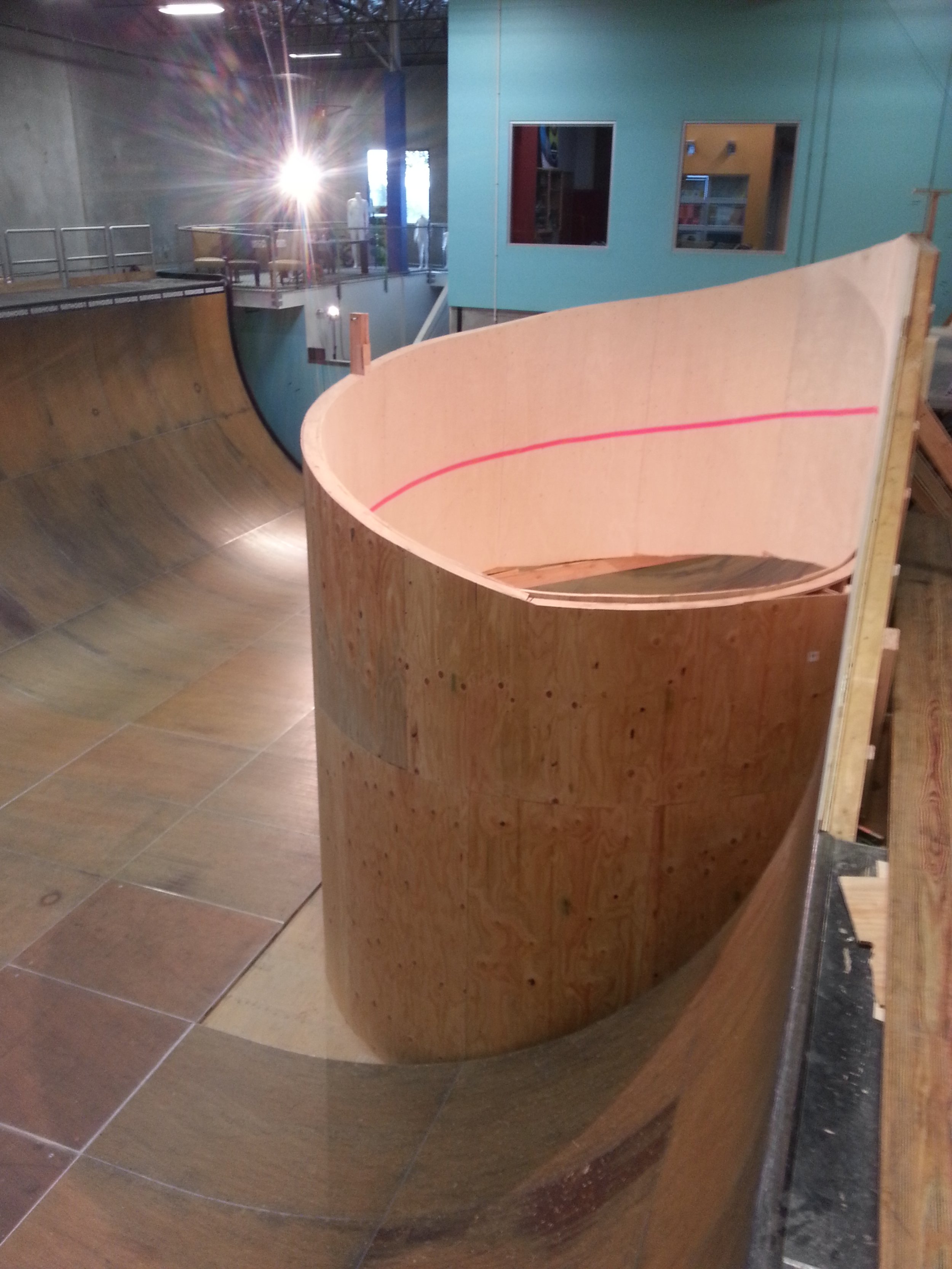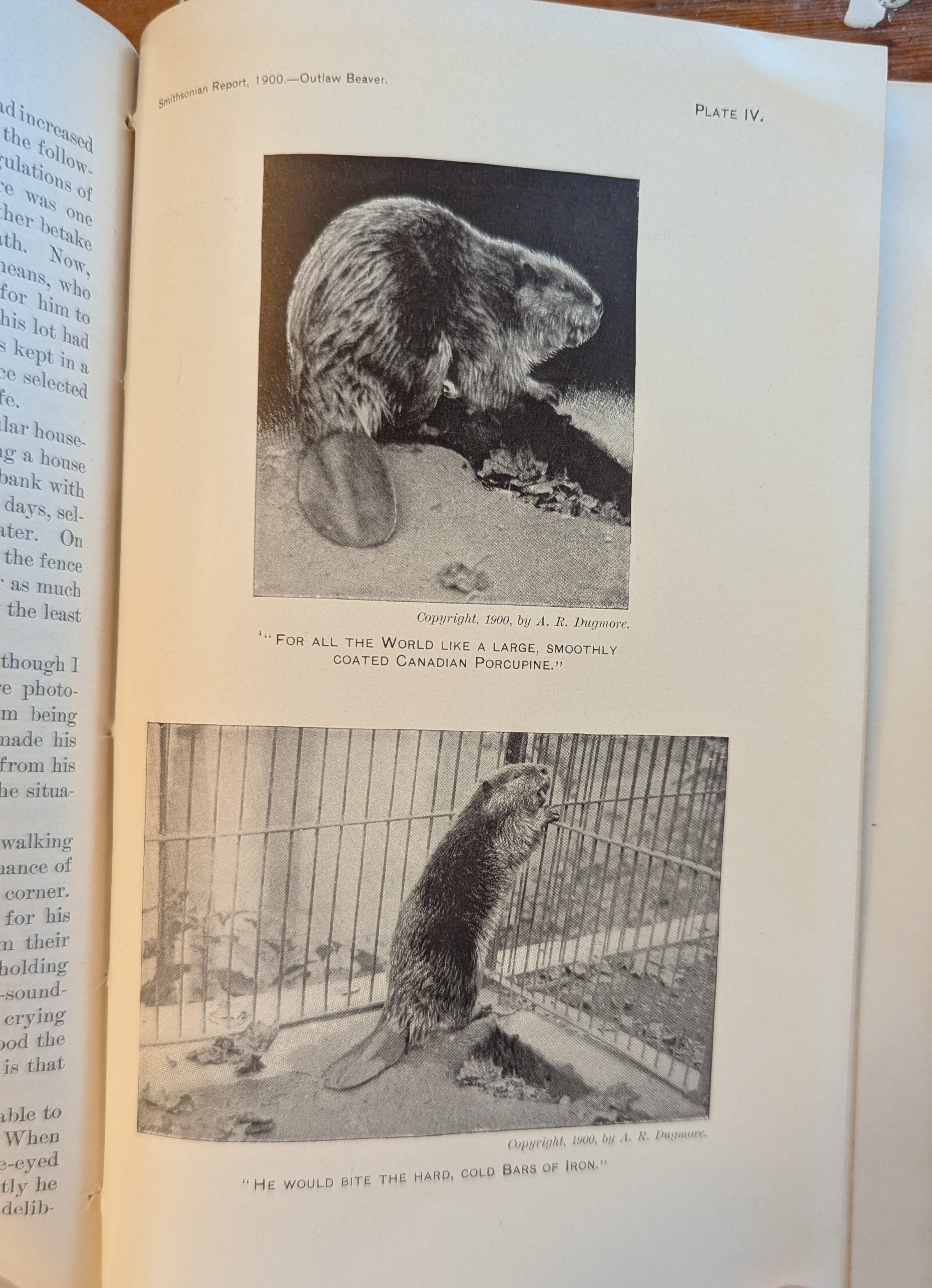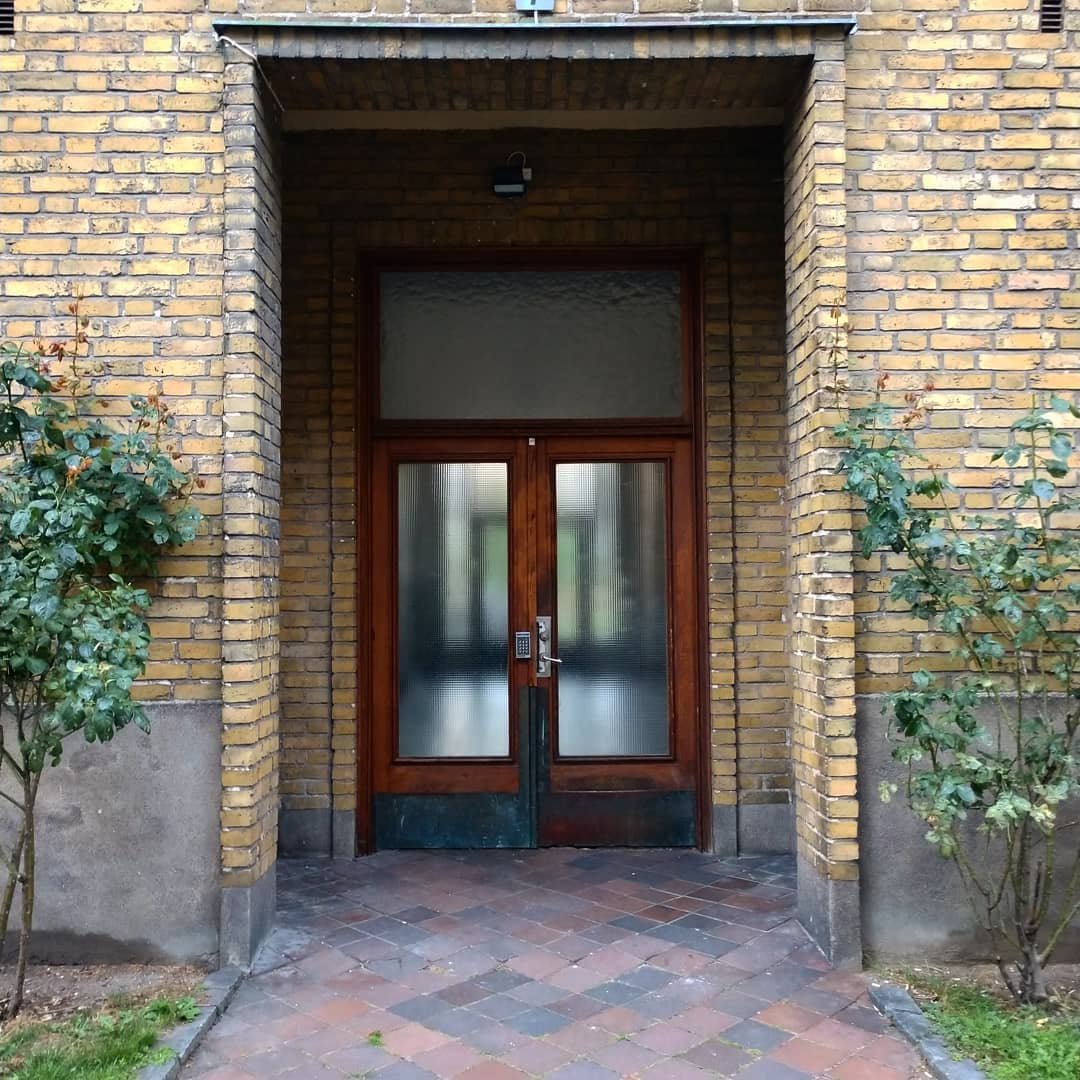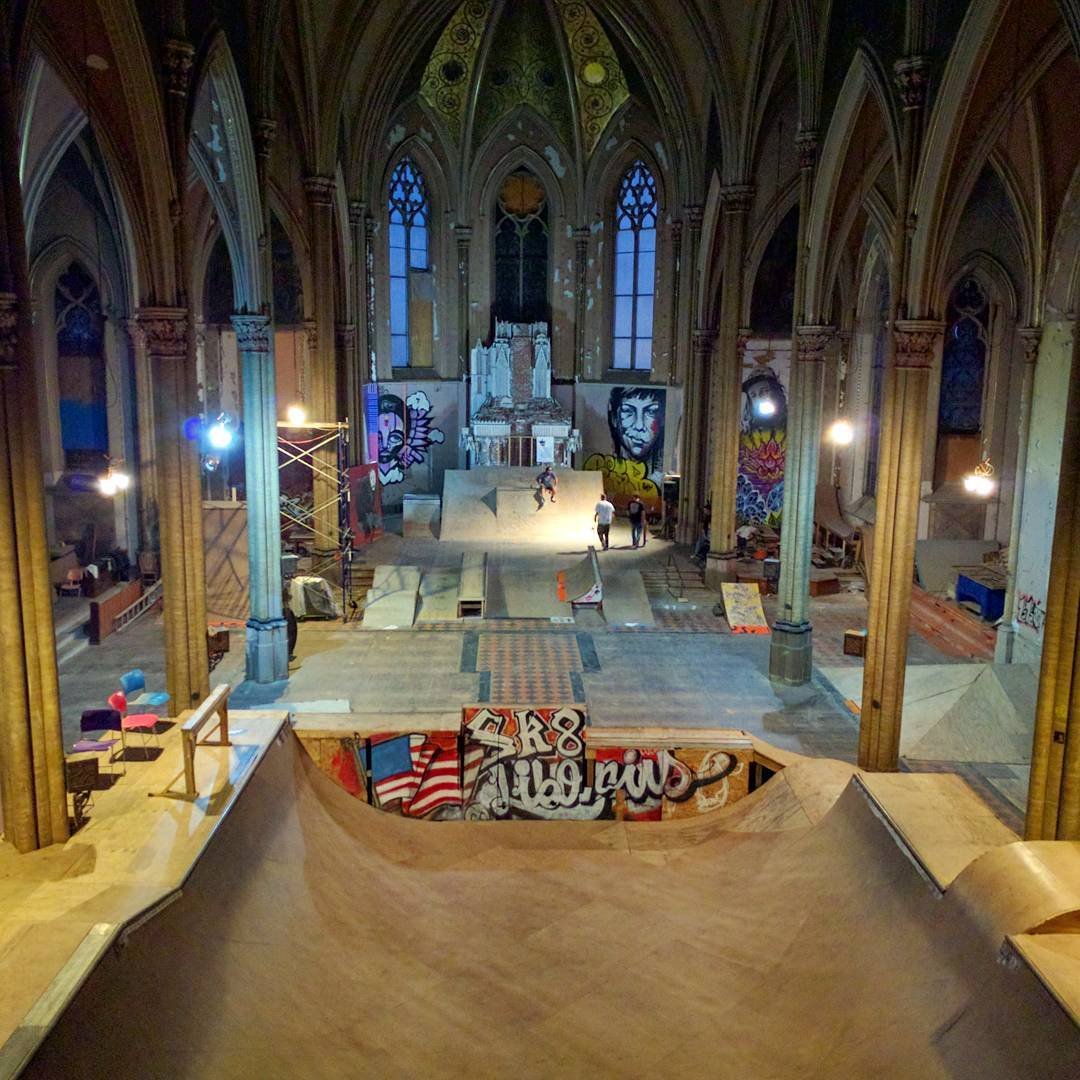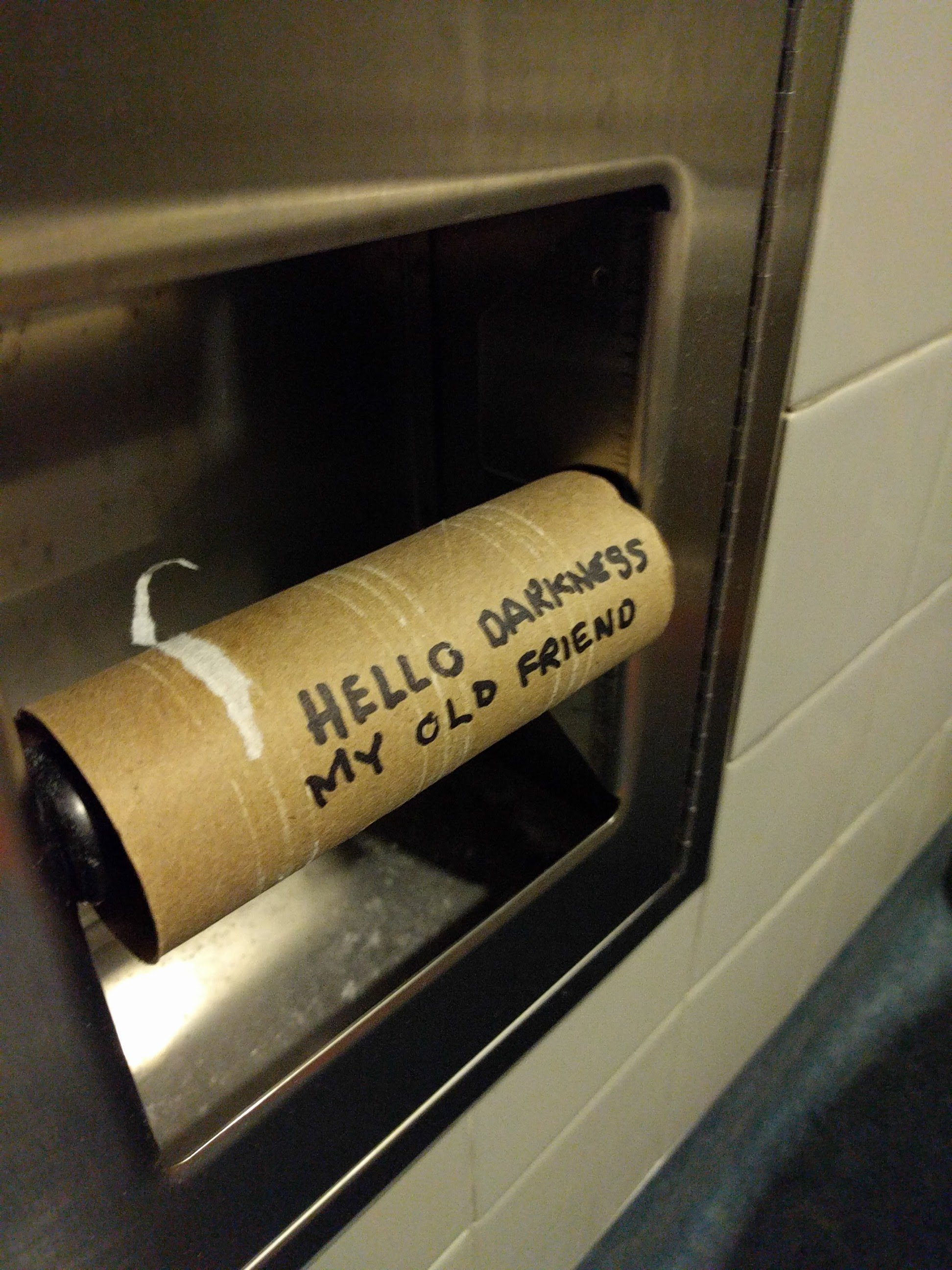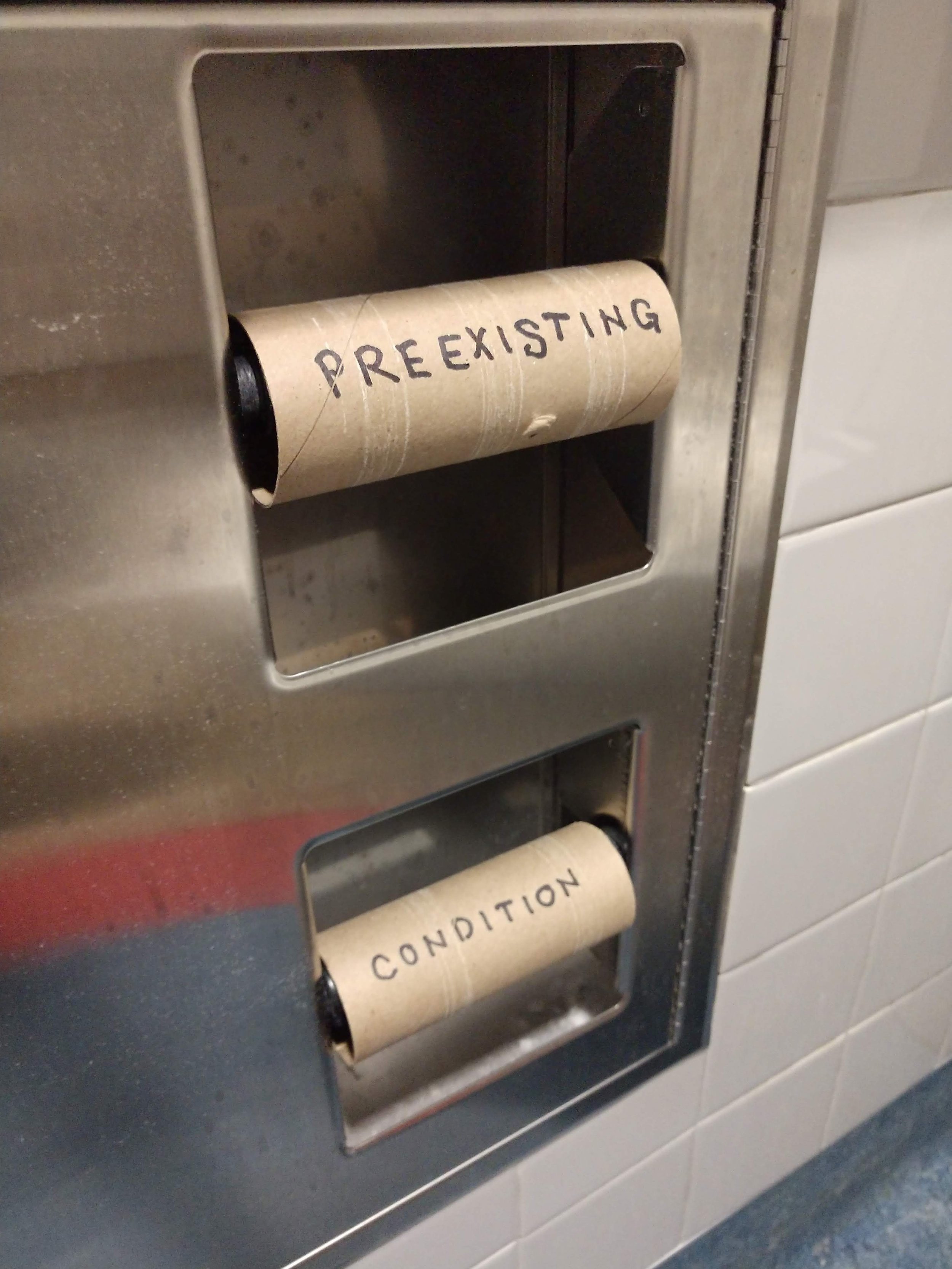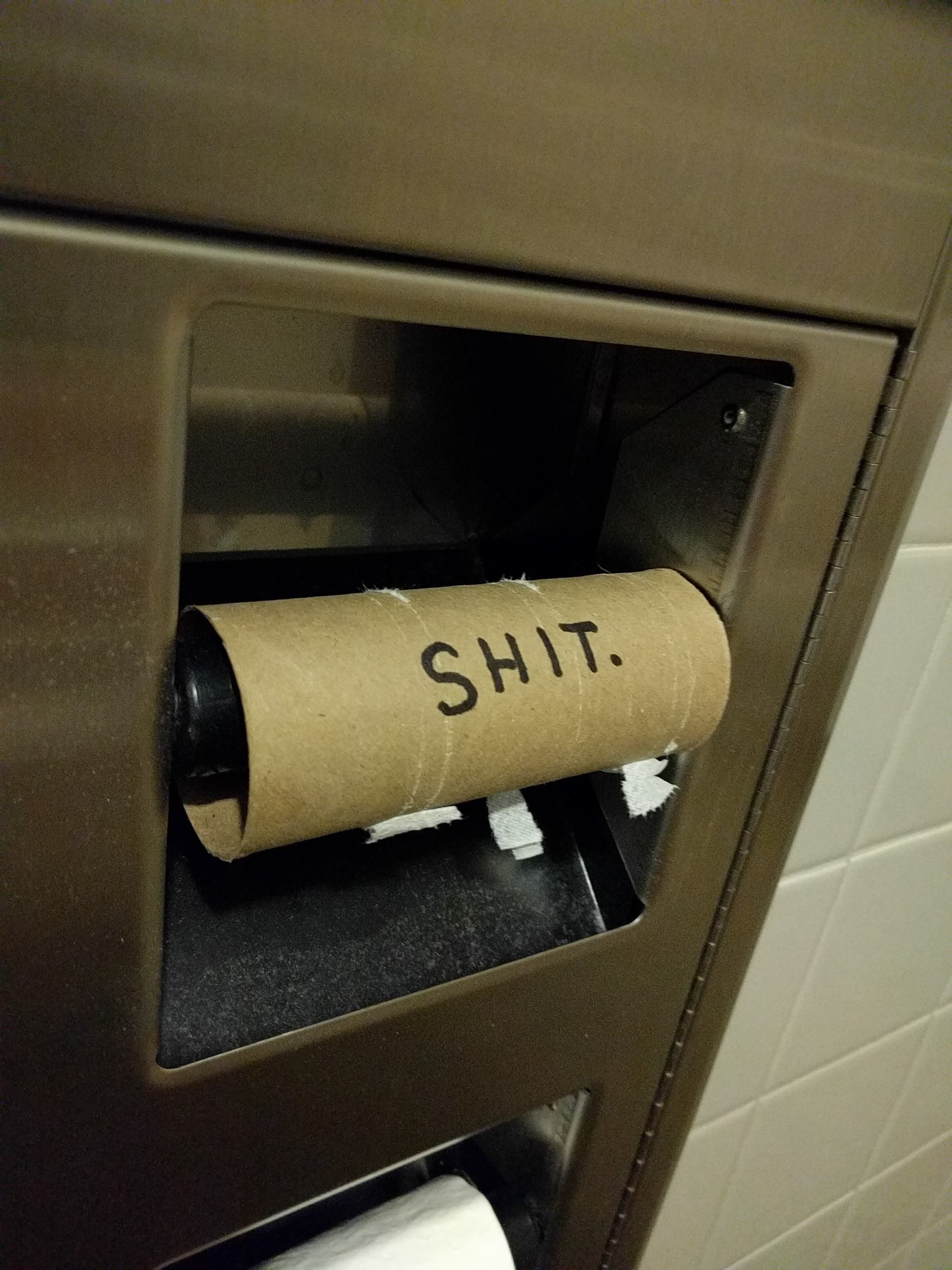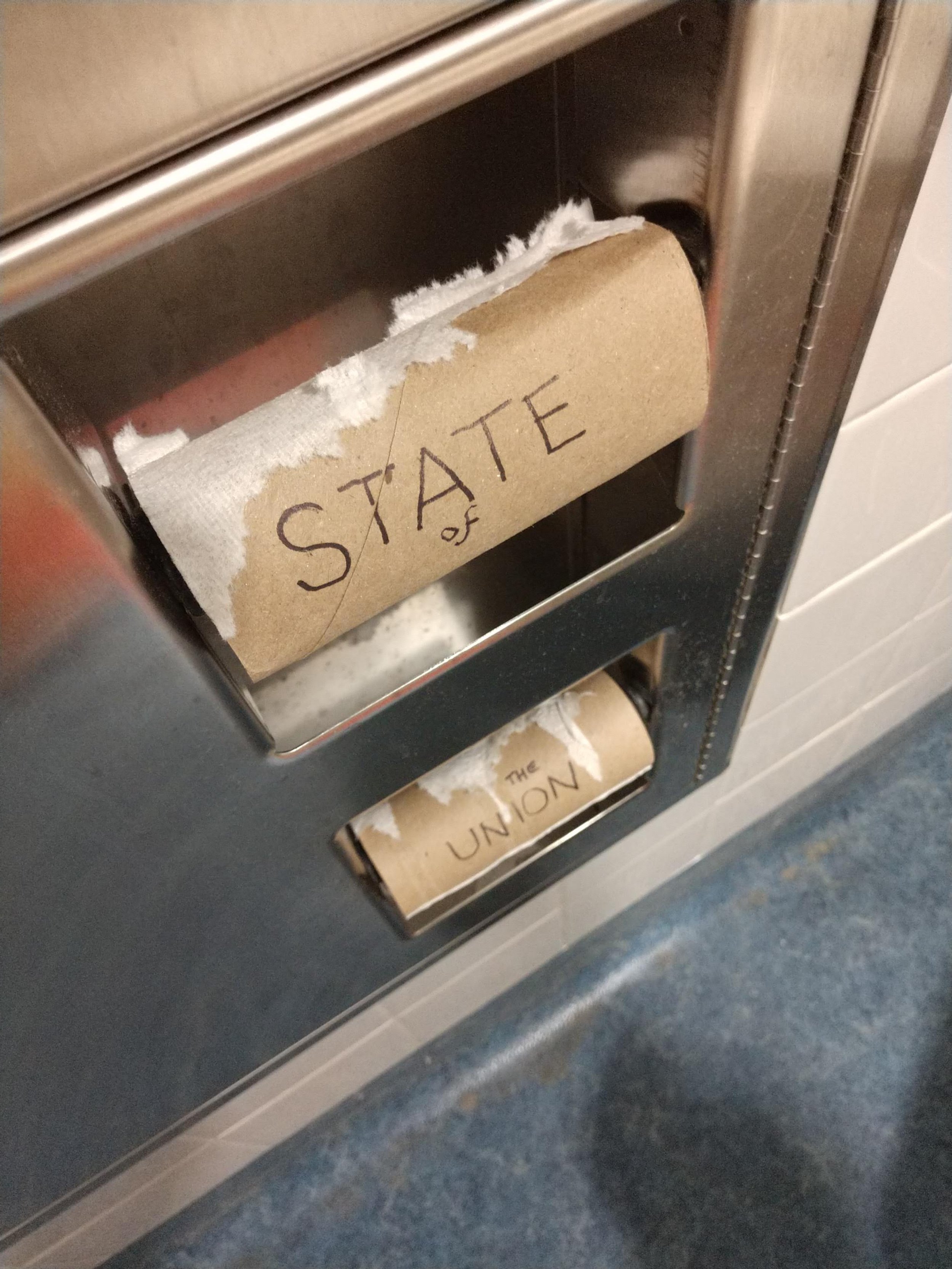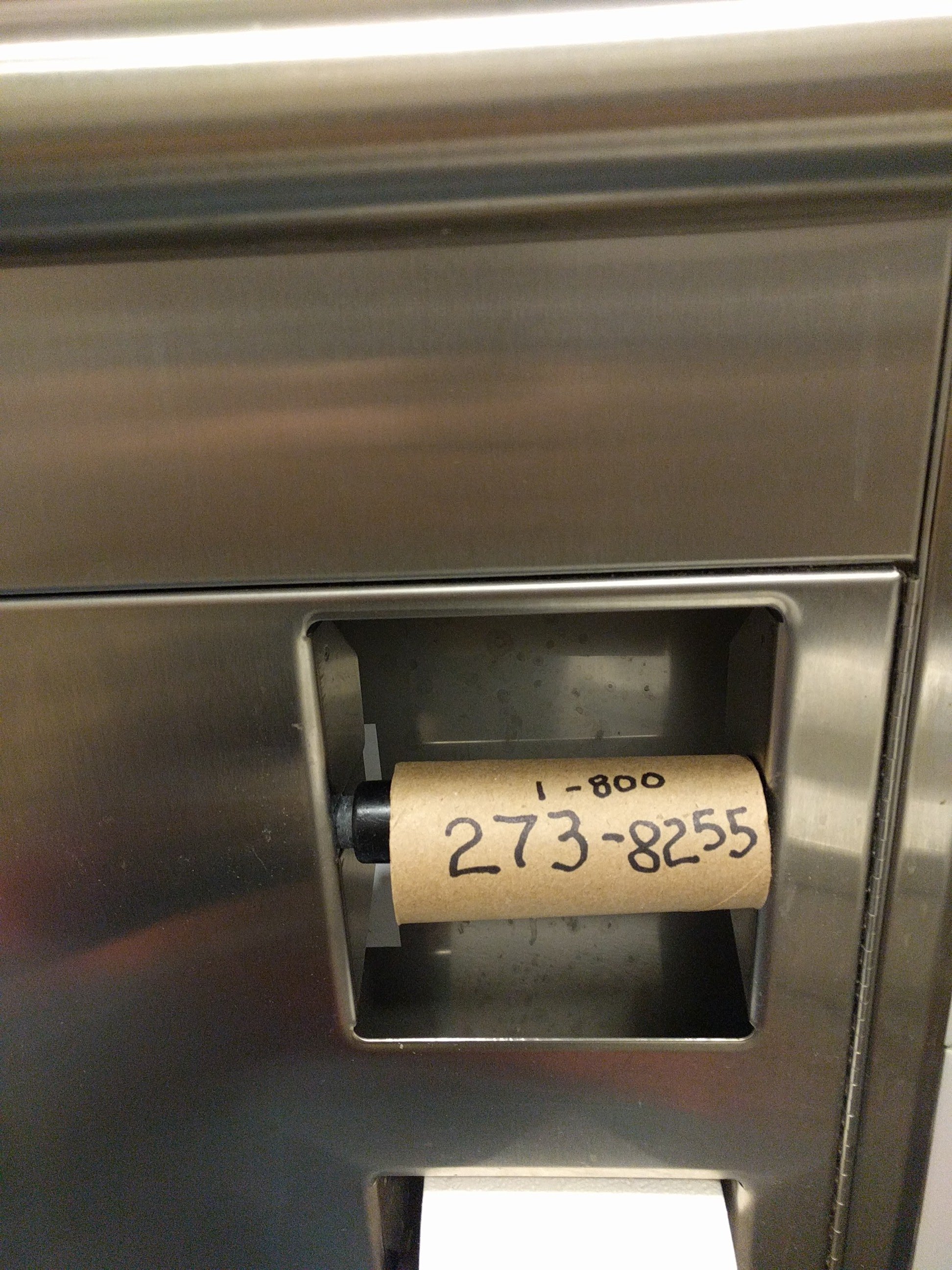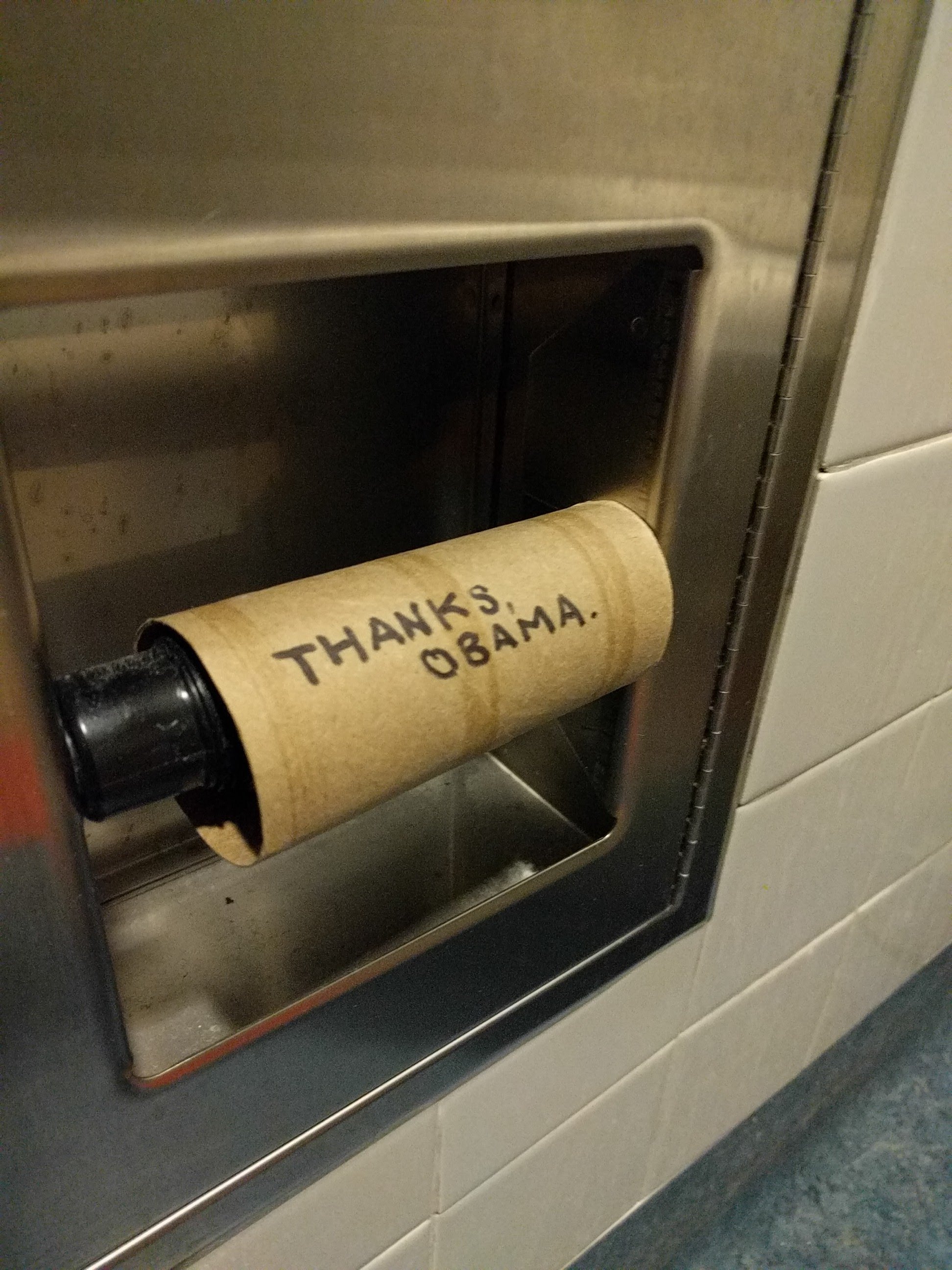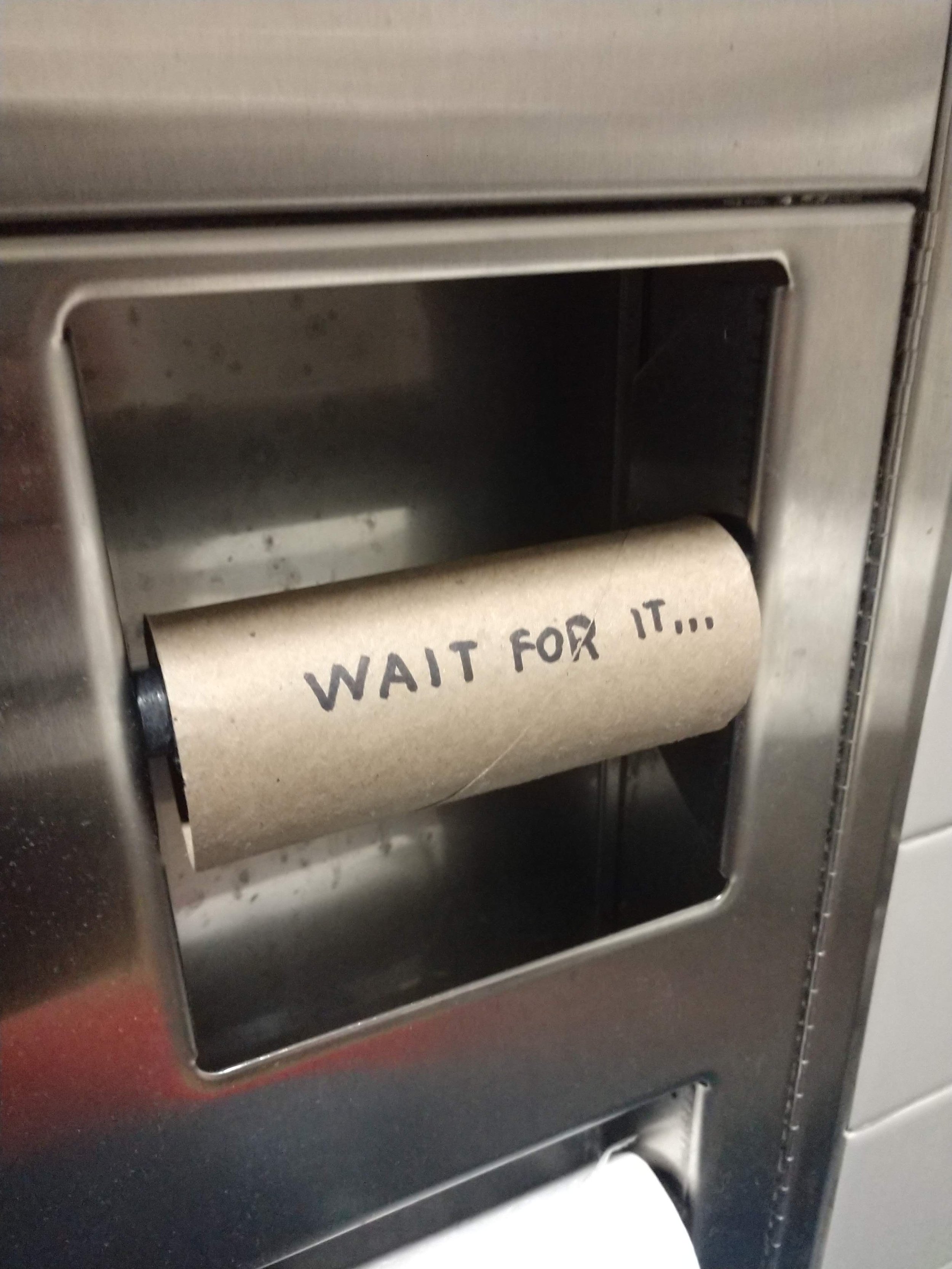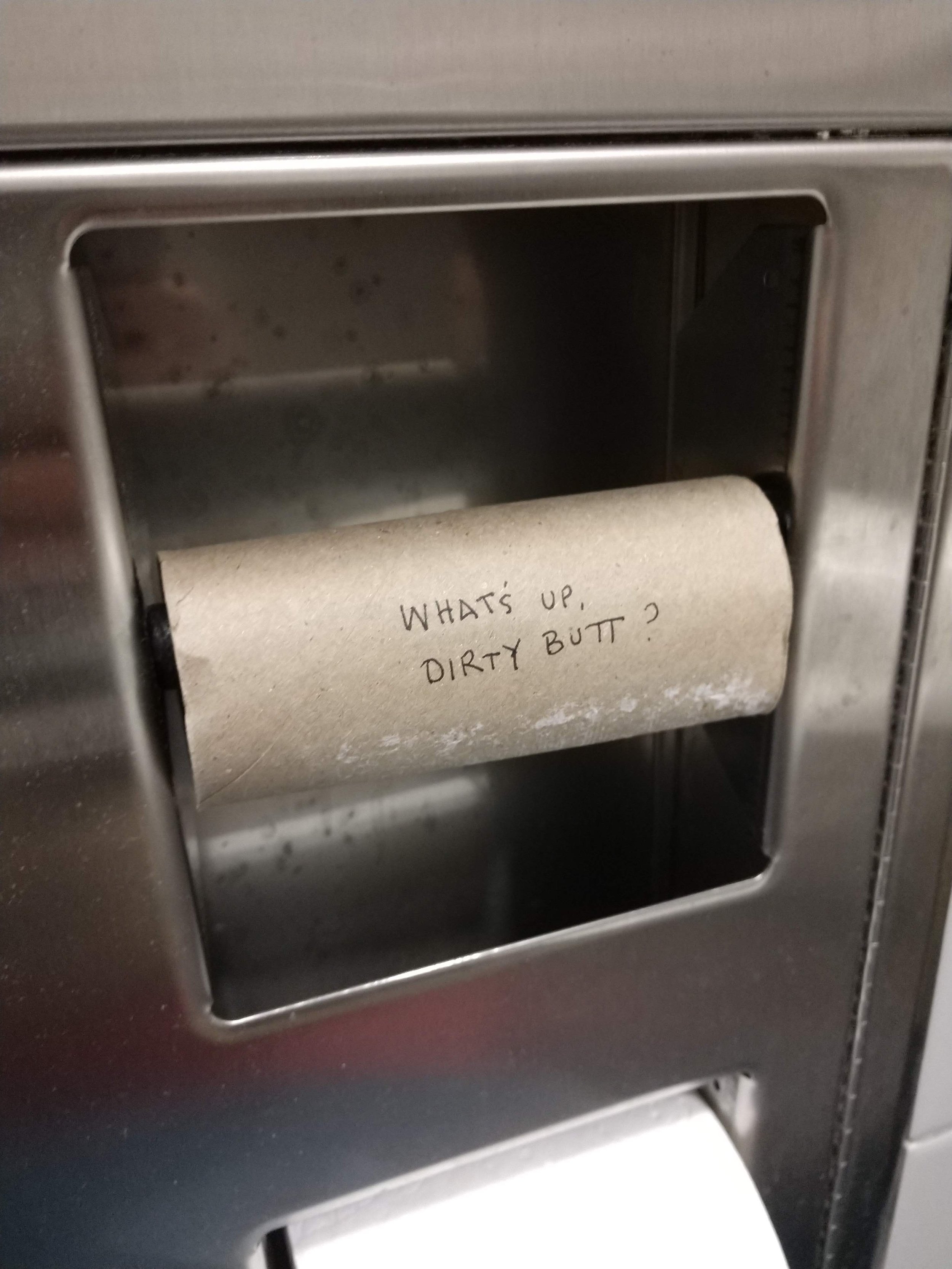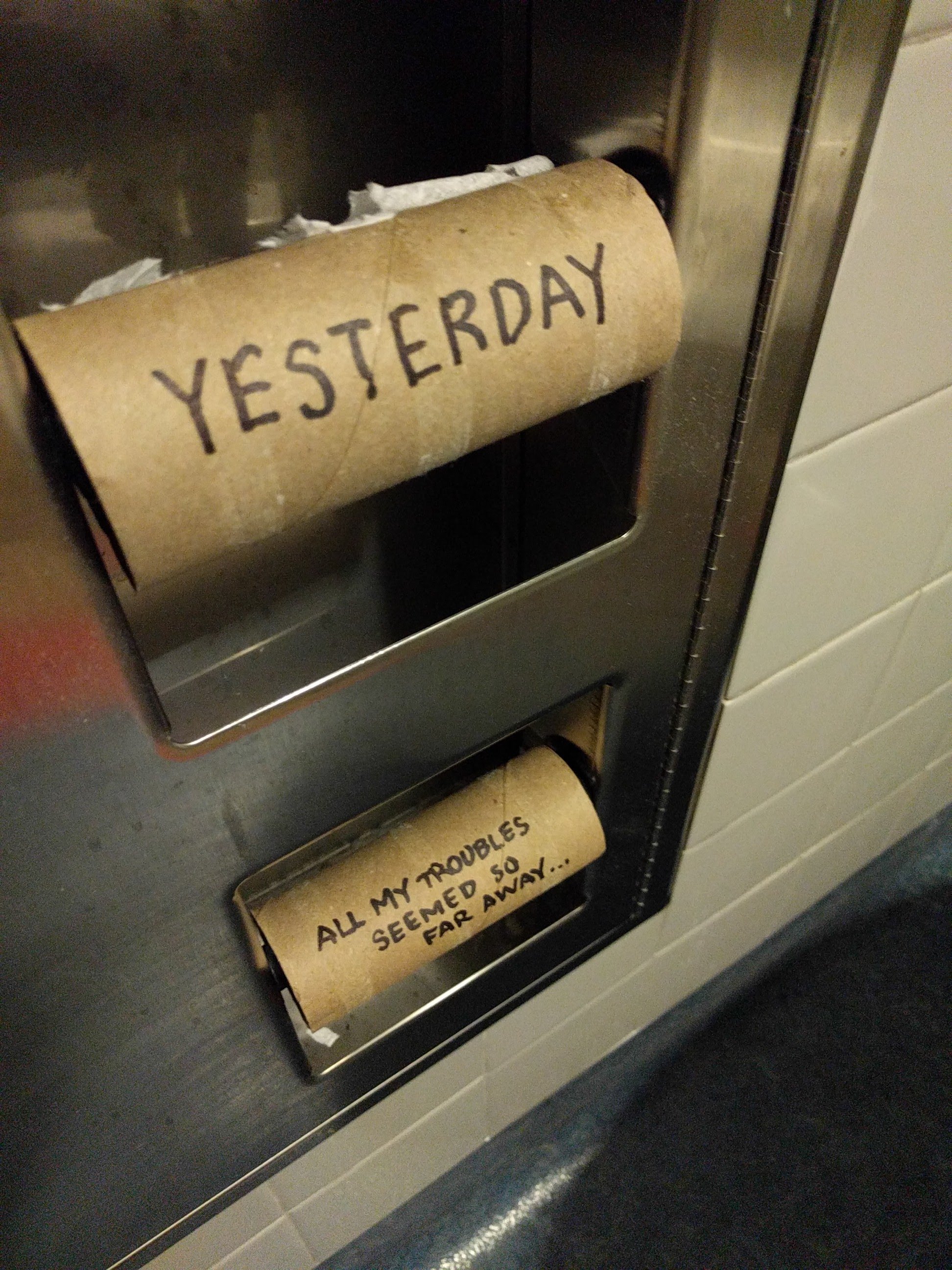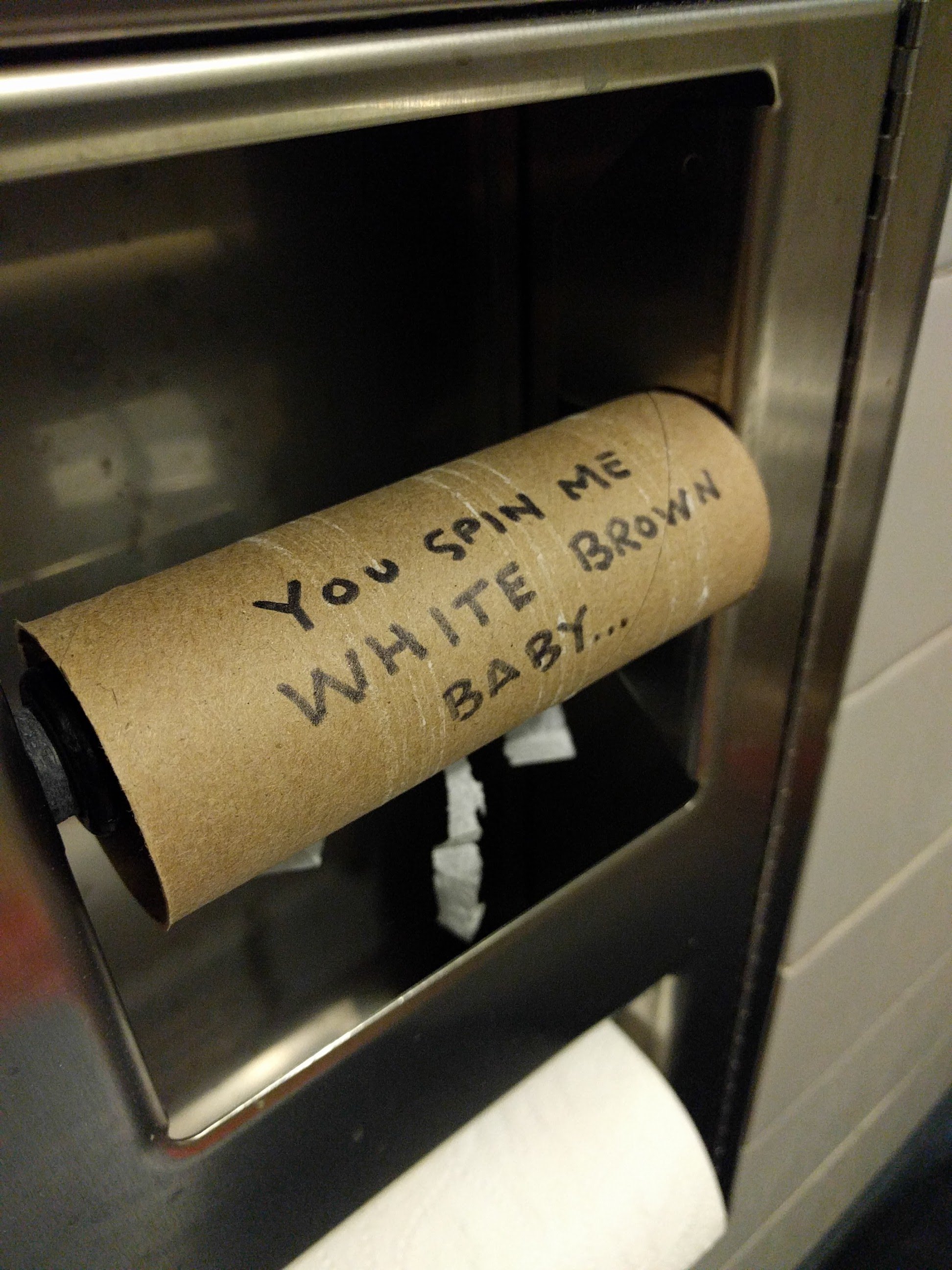All the Ramp…
For about a decade I worked in the building that housed Tony Hawk’s personal vert ramp. There was wide “friends and family” access so it would be common to see Andy MacDonald, Kevin Staab, Lincoln Ueda, and BMX legend Simon Tabron all having a low-key afternoon session together. The ramp also attracted visitors and fans because it is such an iconic structure that is inseparable from the cultural icon. To most people, Tony Hawk rides a skateboard. To skateboarders, Tony Hawk is a legendary vert skater. For millions his identity is linked to the vert ramp form.
The warehouse is a concrete tilt-up deal with one end carved out for offices. Around the ramp is some factory shelving for inventory, a small “street” course, and event gear.
What is its form? It’s a flat-bottomed U-shape. The decks are 13-and-a-half feet above the bottom and the radius of arc is about 15-feet. The last 12 or 14 inches at the top of the ramp are straight up and down. That’s why it qualifies as a vertical ramp.
For the most part things around the ramp just carried on like normal.
While I enjoyed skating the ramp, it didn’t call to me the way some other kinds of skateboarding terrain did. Vert ramps had always been kind of exclusive. Vert skating was macho and the slams could be enormous. The terrain was exotic; pools and ramps. Geographic privilege help build a cultural touchstone… and excellent vert ramps were akin to particular surf breaks. You were in the club or you were not.
Any time something with wheels is left on the ramp it triggers the imagination.
Sometimes the ramp would generate a big session. People would mill around the edges, phones out, capturing the runs. From my desk I could hear the occasional bails, the boards flying.
The ramp is an elegant shape and color. The warehouse is warm.
For the most part the ramp was quiet. Often it was just Tony staying loose. He was often working on new tricks and building new terrain. It was an inventive place in this way. There wasn’t much space between projects.
The ramp was often reconfigured to meet some design goal. This “corkscrew” structure was difficult to engineer and took lots of trial and error with the crash bags before the real effort.
The building housed all of Tony Hawk’s principal businesses; a video production company, a nonprofit organization dedicated to skatepark creation, and Tony’s licensing and business management team. I worked as the nonprofits Programs Director and helped communities get their skatepark efforts organized and funded.
I think the ramp has a lot of character and so there are lots of fun visual conversations possible.
As my time with the organization went on, I began to feel awkward about the social barriers that we maintain in society based on wealth. Every few days it seemed like we were meeting a new tycoon that might be interested in supporting our nonprofit when, in reality, the new tycoon was just interested in meeting Tony. There was a foundational understanding that we only existed due to the namesake and few people entered the orbit with a superseding interest in the nonprofit’s mission. Famous people like to meet other famous people. I saw Mark Wahlberg but I didn’t go to meet him. Lots of things like that.
This space hosted a small sound stage for video production before it became Tony’s office. The window overlooks the warehouse where the vert ramp is located. You can see the decks and railings through the window.
In time the operations shrunk and Tony began winding down his time skating in demos. It felt like some energy was leaving the building. Parts of his team vacated a portion of the building and it was rented to a paddle-board distributor. I started to feel like I had done as much as I wanted to do to advance skateparks. And I’m proud of what I was able to accomplish: A database hosting thousands of skateparks, streamlined grant-management tools for evaluating and reporting, a stronger visual identity and a new logo, and dozens of community workshops all over the world. It was clear in my heart that it was time to go when it was time to go.
The ramp is an excellent size for BMX.
I’m grateful for the opportunity to do good for skateboarding young people and the people who love them. Being supported to pursue skatepark advocacy on a national level was an amazing and exquisite experience.
Book Look, Smithsonian Annual Report
My local college library has a free-book cart that they roll out from time to time. I’m always on the lookout for treasures. Treasures, to me, are samples of older graphic styles and esoteric imagery.
The other day the shelf had a few of these Smithsonian Annual Report to the Regents. I adopted two of the 4 or 5 volumes to pore over in my own time. I thought some of you, my friends, might enjoy seeing what one of these gorgeous books contain.
The Report we’re looking at here is from the year ending 1900. 125 years ago is before anyone today was alive; this is a book of ghosts.
The book is arranged by reports from various Smithsonian editors and programs. The front matter is largely clerical and shares how much material — documents, artifacts, “evidence” — has been procured by the institution.
The two volumes are thick and heavy.
The title page has a lot of useful things on it. The distressed edges of the paper are subtle and irregular. The set type — a narrower version of a face I know as Modern No. 20 — has its quirkiness at the challenging kerning situations like the W-A in Washington and the B-O-A in Board.
The gem is the emblem that reads “For the increase and diffusion of knowledge among men per order (of the) Smithsonian Institution, Washington 1846.” The design elements are superb; torches with ribbons, a dotted line, and arced type, with a map of North America at the center of everything.
Even the rubber-stamp that the library has used has its own kind of charm… an uneven application of ink, off-center, off alignment, off the page.
A full-page map of the Zoological Park expansion. Note the nice compass rose and the hierarchy of type on the title.
An early section showcases the animals that are detained in the Smithsonian Zoological Park. Here are a few of their proudest animals.
A graphic example featuring a map of Smithsonian’s “science camp.” Most of the science is devoted to astronomy.
A few photographs showing Smithsonian’s astronomy camp.
There is a beautiful section of the book featuring solar phenomenon. There is an accordion-fold insert featuring the arc of the moon in front of the sun that is one of my favorite images in the book. Seems like a Bauhaus record cover to me.
The book has lots of graphs and charts that mostly are readable… some are too technical for me to comprehend.
There is a section that examines the astronomy tools in Peking, China. The illustrations are exquisite engravings. I’ve included some details to better reveal the technique.
The chapter that recounts a prototypical flying machine. Note the chart comparing a human and bird skeleton where both skeletons have (for some reason) a hoop through their skulls. What gives?
There is a signature on the night watercolor-looking illustrations but I couldn’t find anything easily about the artist.
A gorgeous section on a blimp — since were in the section about the sky — that is launched from a lake. Note the small fold-out poster showing the blimp at the apex of its flight.
A short section on meteorological kites. I suppose that’s how it was once done. Check out the massive kite reels that are attached to the wheelbarrow-like carts. That’s a great idea.
There are terrific graphics and illustrations throughout the book. Here are a few that I really like.
In 1900 photography was an exciting new way to capture evidence. In one section of the book the authors used photographs and illustration to visualize how sound waves behave.
A short section on the Smithsonian headquarters includes maps and floorplans that seem straight out of a Dungeons & Dragons adventure.
The section on exploration, something Smithsonian was particularly known for, starts with a report on the exploration of the “dark continent.” The fold-out map of Central Africa is terrific. I’ve included details.
The arctic explorations are wild. I love the image of a big, black mechanical beast forcing its way through the ice.
Looking now to history, the book features renderings of prehistoric creatures. I love all of the friendly faces.
Wildlife photography was a new thing in the late 1800s. The camera could capture animals in new, candid ways. This section contains an image of a bird perched on a twig with the whole background knocked out. It’s really pretty… and the pages that are dominated by a large, black vertical image are handsome, too.
Beavers and Gophers!
The chapter on Egyptian ruins includes a subsection on antique scales. There’s so much great reference here. The large six-sided column covered with cuneiform is amazing.
The last chapter talks about “the new spectrum.” I think it’s a wave range that was recently discovered. I love the massive fold-out poster!
The glossary shows the breadth of topics that are offered in this sturdy annual volume.
If you would like to explore archival volumes of Smithsonian Reports, they are generous with large, comprehensive (seeming) scans on their website. I encourage you to go there for more juicy Smithsonian stuff.
All the doors…
An image set of doors
Doors lead to unknown spaces. Like cats, I think we’re unable to NOT be curious what’s behind. Here are some doors I liked enough to take a picture of. I’ve arranged them vaguely into groups of similarity but they represent very different kinds of spaces.
All the Vacancies
A photo set of vacant spaces
Empty storefronts and work spaces are a ubiquitous part of shopping districts everywhere. Each empty space is compelling to me because it represents a change of plans; a goal that wasn’t met (or was met, perhaps), a failure, an exercise in missed projections. Whatever the case, what’s left behind is both a shadow of the past and an opportunity for the future. Here are photos of some of the spaces I’ve collected over the years.
All the Facades
A photo set of facades
A building’s facade is its public expression just like our faces are what our communities associate with our identities and personas. What a building’s facade says, intentional or not, seems like reasonable take on the space’s function and character.
The Mystery Stairs
An image set of stairs
Stairs are great subjects because people can quickly relate to their scale. Stairs represent a kind of promise… they lead to an unseen destination. They can produce a sense of wonder and inspire curiosity.
2-Point Perspective
An image set exploring 2-point perspective
Two-point perspective is line an argument between two vanishing points. The contest is dynamic and creates tension. Sometimes the two points are distant, as these images suggest…
…and sometimes they seem to be in some kind of internal conflict, like the following images.
1-Point Perspective
An image set exploring 1-point perspective
I’m comforted by certainty and I like knowing that some things are true. One-point perspective is the graphic manifestation of this outlook; it represents a powerful visual gravity… an inescapable composition.
The fact that two opposing viewpoints might be simultaneously true annoys me. Maybe I’m risk-averse or fear confrontation… I might prefer to quietly judge rather than interrogate.
Here are some images that express this powerful framing. I find these images to be especially interesting from a compositional standpoint; irresistible and captivating.
The Toilet Papers
The Toilet Papers
For nearly a decade I worked for a charitable organization in the skateboarding industry. Our office was shared with other enterprises in the skateboarding space. The building was filled with skateboarders, mostly young men, and their friends who were mostly skateboarders (and also young men).
One outcome of having a building full of skateboarding dudes was that the toilet paper rarely got replaced when it ran out. This was all the invitation for creative mischief that I needed.




